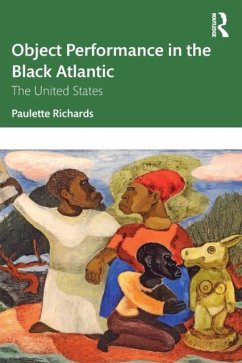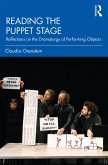Given that slaveholders prohibited the creation of African-style performing objects, is there a traceable connection between traditional African puppets, masks, and performing objects and contemporary African American puppetry? This study approaches the question by looking at the whole performance complex surrounding African performing objects and examines the material culture of object performance.
Object Performance in the Black Atlantic argues that since human beings can attribute private, personal meanings to objects obtained for personal use such as dolls, vessels, and quilts, the lines of material culture continuity between African and African American object performance run through objects that performed in ritual rather than theatrical capacity. Split into three parts, this book starts by outlining the spaces where the African American object performance complex persisted through the period of slavery. Part Two traces how African Americans began to reclaim object performance in the era of Jim Crow segregation and Part Three details how increased educational and economic opportunities along with new media technologies enabled African Americans to use performing objects as a powerful mode of resistance to the objectification of Black bodies.
This is an essential study for any students of puppetry and material performance, and particularly those concerned with African American performance and performance in North America more broadly.
Object Performance in the Black Atlantic argues that since human beings can attribute private, personal meanings to objects obtained for personal use such as dolls, vessels, and quilts, the lines of material culture continuity between African and African American object performance run through objects that performed in ritual rather than theatrical capacity. Split into three parts, this book starts by outlining the spaces where the African American object performance complex persisted through the period of slavery. Part Two traces how African Americans began to reclaim object performance in the era of Jim Crow segregation and Part Three details how increased educational and economic opportunities along with new media technologies enabled African Americans to use performing objects as a powerful mode of resistance to the objectification of Black bodies.
This is an essential study for any students of puppetry and material performance, and particularly those concerned with African American performance and performance in North America more broadly.








